October 21, 2024
How Ghost Avoids the Common Trappings of Unlimited PTO
Unlimited PTO is an amazing perk for employees, in theory. Who doesn’t want to be able to take as much time...
In this post, we’re going to share some of the most notable examples of companies with unlimited PTO policies.
Unlimited PTO is an increasingly popular employee benefit. It’s more common in smaller companies, such as remote tech startups with just a few employees. But as you’ll see in this post, many high-profile businesses, including some household names, offer this for their employees as well.
Read on to get a list of noteworthy examples. We’ll share 12 examples, followed by several who used to have an unlimited vacation policy, but since pivoted to something different.
Here are 12 companies whose employees get unlimited vacation days. This list includes companies of varying sizes, from small startups to some of the biggest tech companies in the world.

Streaming giant Netflix is one of the most well-known examples of a company with an unlimited vacation policy. Netflix was perhaps a decade ahead of the curve with unlimited PTO, implementing it way back in 2003.
CEO Reed Hastings has spoken at length about their unlimited vacation policy. Here are a couple of his quotes on the topic:

Netflix’s employee handbook is available to read online, if you want to take a deeper look into their workplace philosophy.
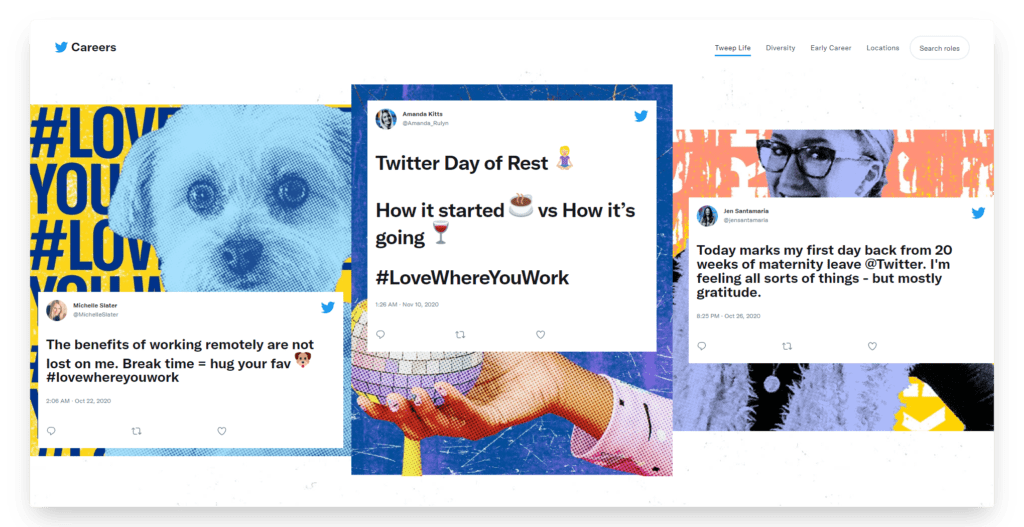
Twitter offers the majority of their employees unlimited paid time off. Alongside 10 company-wide holidays, they don’t track the number of vacation days employees take, allowing a great amount of freedom and flexibility.
Employees say the company is very accommodating when someone wants to take time off, and it’s generally flexible to take time off whenever you want – although it may need manager approval.
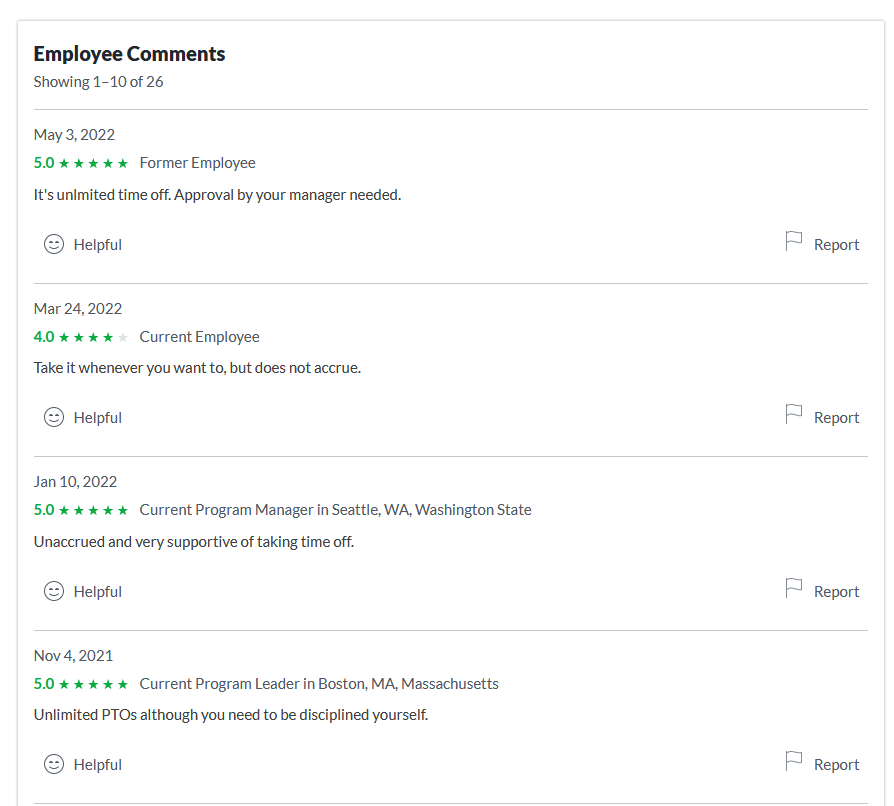
Companies with unlimited PTO don’t get much bigger than Sony. The electronics branch of the company offers a flexible system with no rigid controls or limits, and no traditional accruals. This helps their employees maintain a healthy work/life balance, and take regular breaks to kick back at home and play PlayStation (or Xbox – but don’t tell your boss).
In their own words, “our employees effectively balance work demands with time off already”. It is, however, only in exempt roles. Not all employees are eligible for unlimited PTO, but their PTO benefits are generous across the board, regardless.
Note-taking app Evernote has a very generous, progressive and extensive list of employee benefits, which includes a flexible time off policy.
This is a big part of the reason Evernote has such great reviews from current and former employees (per Glassdoor).
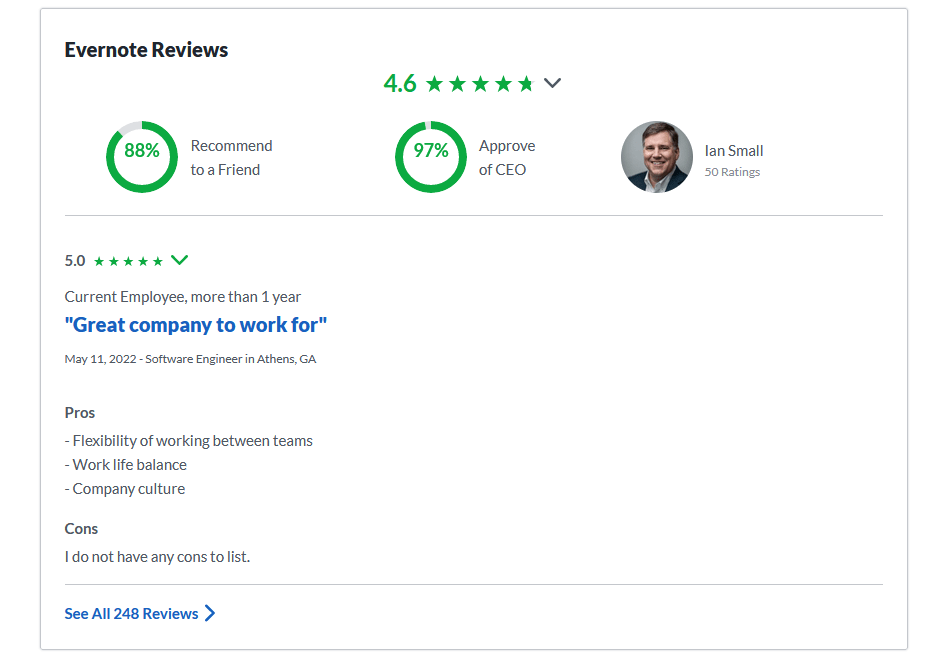
It doesn’t stop with flexible PTO, however. Evernote also offers an “annual vacation stipend”, giving employees $1,000 to spend towards a break of 5 days or longer, to encourage more employees to take their PTO.
Tech company Roku is another to offer unlimited PTO to employees. It’s part of their culture that pushes staff to be independent, productive at work, yet maintaining a good work/home balance.
Roku CEO Anthony Wood worked in Netflix previously, so it’s no surprise that their company culture mirrors that of Netflix’s. Like Netflix, Roku also has a company culture document available to read online.
It’s in that document you can read about their vacation policy:
“An example of trust is the Roku vacation policy. For salaried employees, we don’t track vacation or have official holidays. Employees can take as much vacation as they think is appropriate, so long as they get their job done and do not block others’ work or deadlines (We simply check and give notice before taking vacation).”
Massive software company Oracle leads from the front with their employee benefits package.
They offer flexible vacation to salaried employees (those who aren’t eligible for overtime), which is, in effect, an unlimited PTO policy. Vacations need approval, but other than that, employees have greater flexibility than a traditional leave policy.
Those employees who aren’t eligible for flexible vacation still get paid PTO – 13 days per year for the first three years working at the company, and 18 days per year after that.

In 2015, LinkedIn moved to a system they called “discretionary time off”, or DTO. This is effectively the same as unlimited vacation time.
Like most unlimited vacation policies, it’s not actually unlimited. Employees can’t just take time off when they like, or for as long as they like. Employees need to put in a time off request, and need management approval. But it does offer employees the freedom to take time off without rigid limits.
The company also gave almost all employees a full week off in April 2021, which they said was done to address burnout and improve mental health throughout the organization.
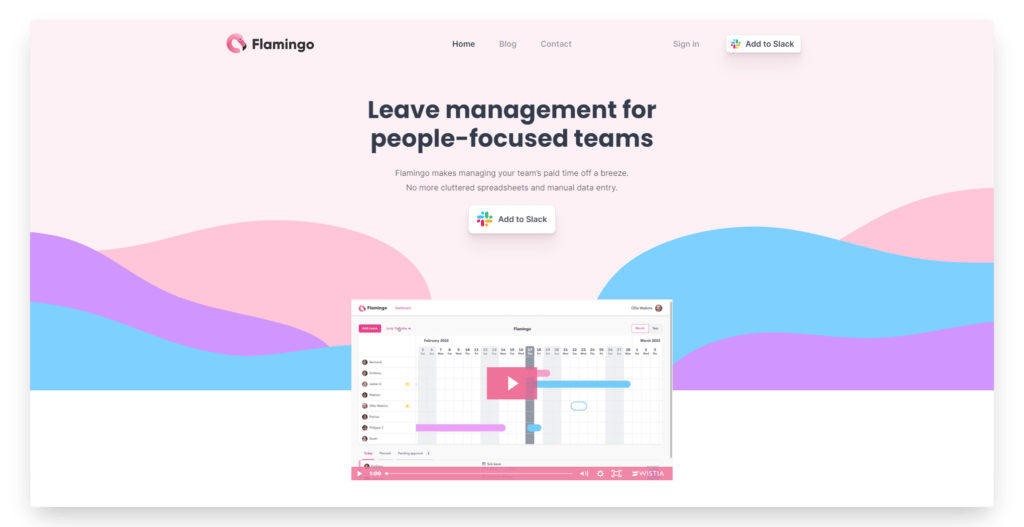
At Flamingo (the world’s favorite vacation tracker software ;)), we’ve always had unlimited PTO. As a small, remote software startup, we never felt it made sense for us to set limited when we track PTO.
Everyone can see how their work contributes to the team, so there’s a clear incentive to ensure you carry your weight and be productive. As long as that happens, we’re fine with someone taking leave almost any time they like.
Though we’ve never kept limits on PTO, we did realize that we needed a way to keep tabs on people going on leave, to keep everyone in the team in the loop. That’s why, when we were focused on building WordPress plugins, we decided to make Flamingo.
If you’re a small business like us, Flamingo is perfect for you, whether you have an unlimited PTO policy or not. You’ll find, like we did, it’s much easier to manage leave and keep everyone fresh and productive.
Flamingo streamlines leave management, letting you spend less time managing paid time off and more time growing your business
File hosting & cloud storage heavyweight Dropbox is another with generous employee benefits, including unlimited PTO.
Their Glassdoor reviews on vacation & PTO are mostly extremely positive from Dropbox employees, reaffirming that the company has an unlimited PTO policy which most employees love.
Only a few employees mention that it is not literally “unlimited” – but so is the case for any such policy.
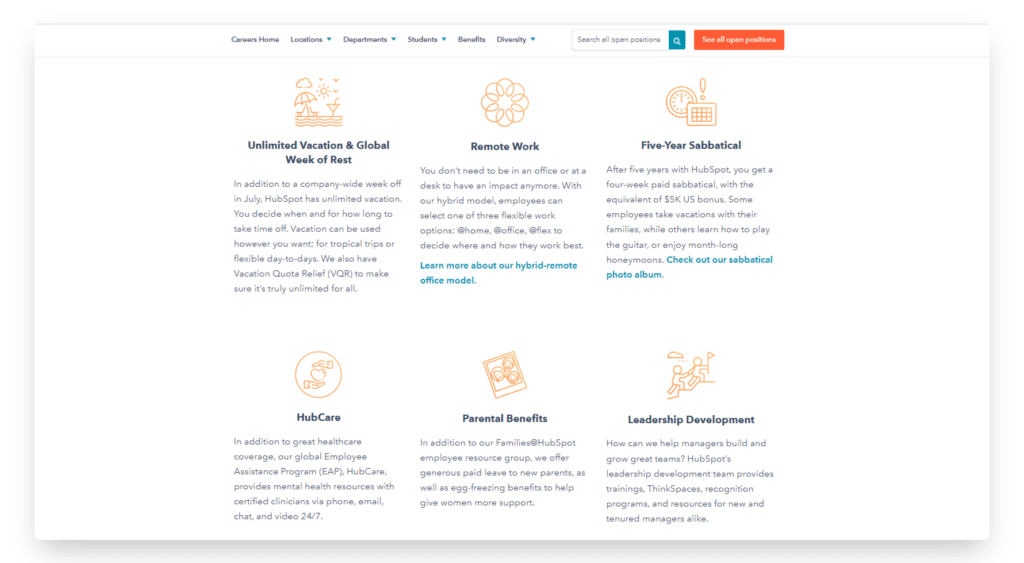
Employee wellness is a big priority for internet marketing company HubSpot. Their list of benefits includes global healthcare (including mental health care), parental benefits, tuition reimbursement, nutrition benefits, and an unlimited vacation policy.
HubSpot also offers a company-wide global week of rest in July, and a paid four-week sabbatical (with a $5,000 bonus to go towards it) after working with the company for five years.
Project management tool Asana’s Glassdoor reviews are almost perfect for vacation & PTO. Here are a few highlights:
“Vacation is unlimited/untracked. The only “limit” is common sense (i.e. you should be here enough that we can tell you work here, and you should be getting your work done).”
“We have flexible PTO, meaning if your time off is approved, you don’t need to worry about how much, nor take unpaid leave.”
“Flexible PTO, and not the kind where you feel pressured to not take it.”
Reviews on other sites rank their unlimited vacation policy as the top non-healthcare benefit offered to employees.
Unlimited PTO isn’t just for modern tech companies. Kronos, a workplace management software & services company, has been in operation since the 1970s. And in 2016, they switched to offering unlimited PTO.
CEO Aron Ain penned an article in HBR talking about their switch to unlimited PTO. He explains why they did it, the challenges they faced, and the results. They found that employees took more leave (without abusing it), with 16.6 average vacation days taken under unlimited PTO, compared to 14.0 per year before that.
Related Article: Is Unlimited PTO a Trap? We examine the reality of unlimited vacation, and how it can go wrong.
It wouldn’t be fair to mention only success stories with unlimited PTO. It doesn’t work for everyone. Here are three companies who offered unlimited PTO, but since decided to move to a different system.
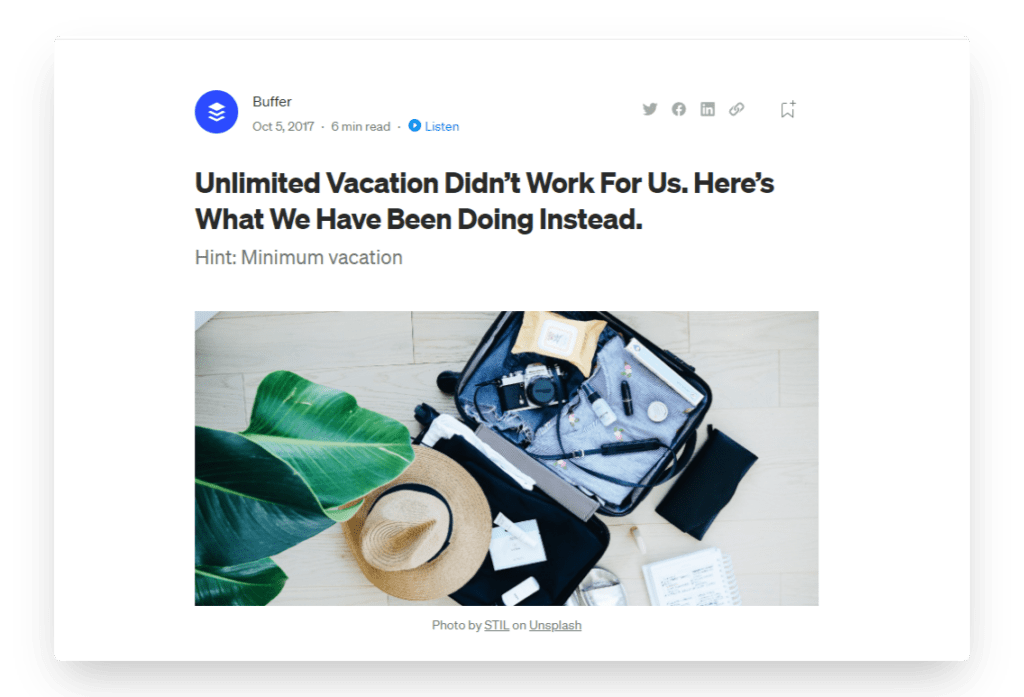
Buffer, who are open and transparent about almost everything they do behind the scenes, used to offer unlimited PTO.
But they found that people weren’t taking enough time off. Employees were unsure how much was acceptable, and felt guilty about asking for time off.
So they switched to a minimum vacation policy instead. Though not strictly enforced, they encourage employees to take a minimum of 3 weeks (15 days) paid vacation each year.
Technically they still don’t have a maximum number on PTO, so it could still be considered an unlimited vacation policy. But they realized that a completely open and flexible policy didn’t work out.
Kickstarter also found that there was too much uncertainty among their employees with unlimited vacation days.
They changed their policy to a cap of 25 days per year, which is still generous by most standards, and removes ambiguity over how much time off is acceptable.
A spokesperson from the company said in 2015, “by setting specific parameters around the number of days, there was no question about how much time was appropriate to take from work to engage in personal, creative, and family activities.”
CharlieHR CEO Ben Gately published an extensive breakdown of their company’s experience with unlimited holiday (aka vacation).
They offered unlimited paid time off to all staff, right from when the company was founded. But after a while they found that employees had too much anxiety over how to navigate the policy.
Gately accepts that unlimited PTO works for some companies, but for them, it doesn’t. They ended up switching to a clearer, yet still generous holiday policy.
Unlimited PTO is the #1 most valued emerging employee benefit by employees and job-seekers today. Get more data here: Unlimited PTO Statistics
The biggest takeaway from these companies offering unlimited PTO is that it can work – but it’s not for everyone.
The most common problem with unlimited vacation time is making sure employees take enough leave, and avoid burning out. When there’s no expectation for how much leave you can take, a lot of people feel pressure to work more and vacation less.
If you’re going to offer unlimited PTO, figure out how to set expectations with your employees. Ensure they still take leave regularly, and feel guilty about asking for time off.
Flamingo’s leave tracker is perfect for identifying and following up with staff who work too long without a vacation. It takes just a couple of clicks to pull up leave reports, to spot key trends needing to be addressed.
Flamingo also makes it stress-free for employees to ask for time off, by making it totally asynchronous.
Our tool is perfect for modern teams with unlimited PTO policies, as well as those with a more traditional leave policy.
Check it out on the Slack app directory, and click here to sign up for free.
Flamingo® makes managing your team’s paid time off a breeze.